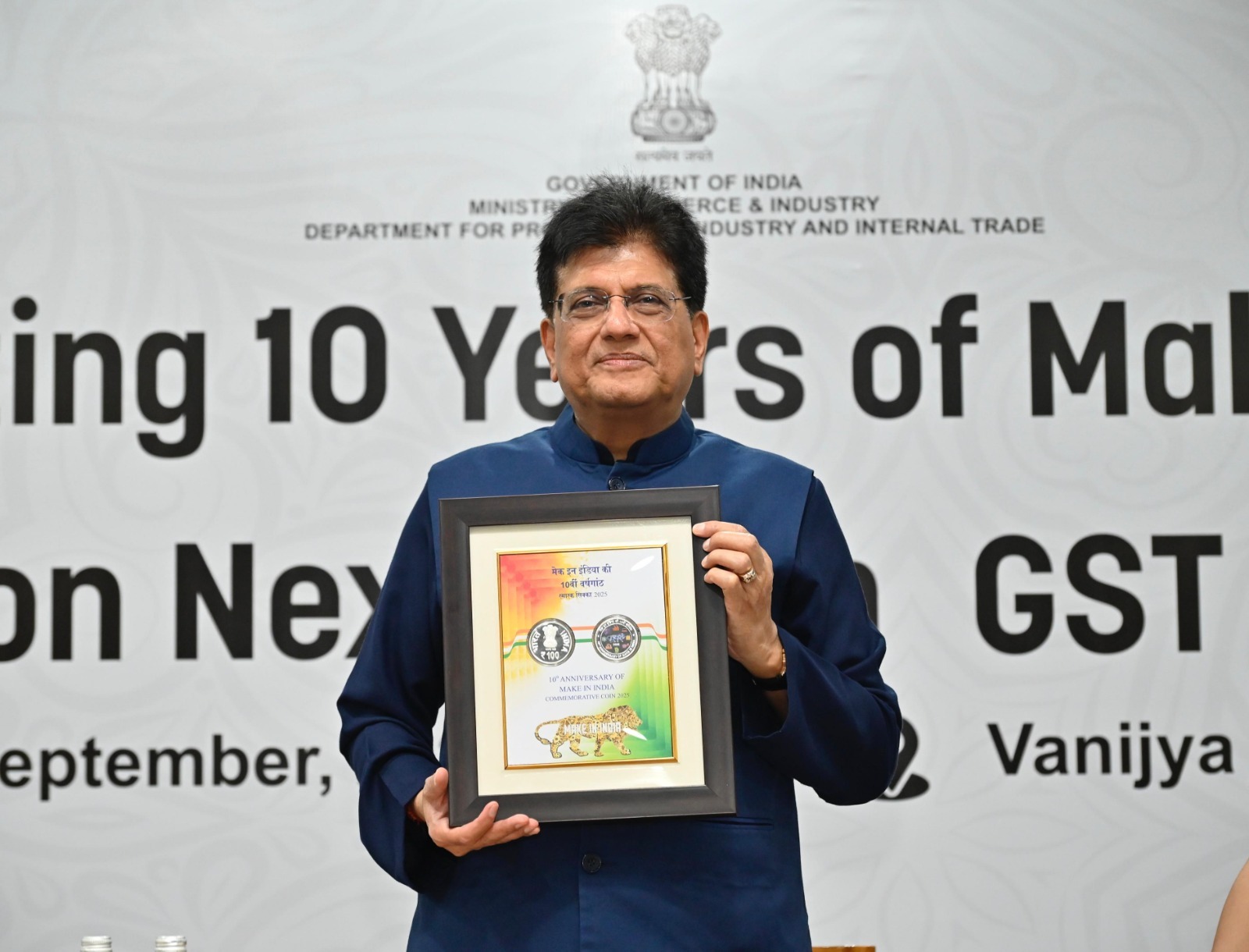Assessment of Logistics Cost in India

- 26 Sep 2025
In News:
- On the occasion of a decade of “Make in India”, the Union Minister of Commerce and Industry, Shri Piyush Goyal, launched the report on Assessment of Logistics Cost in India in September 2025.
- This marks the first scientifically derived national estimate of logistics costs, aligning with the objectives of the National Logistics Policy (NLP), 2022, to make India’s logistics sector globally competitive, data-driven, and cost-efficient.
About the Report
- Prepared by: Department for Promotion of Industry and Internal Trade (DPIIT) and the Department of Commerce.
- Methodology: Uses a hybrid approach, combining secondary data analysis with nationwide enterprise surveys to ensure scientific estimation.
- Objective: To establish a uniform national framework for measuring logistics costs and benchmarking them with global standards, in line with the NLP (2022).
Key Findings
- Logistics Cost Estimate (2025): Around 7.97% of India’s GDP.
- Previous Estimates: Older, often-cited figures of 13–14% of GDP were based on partial or external datasets, leading to inconsistent policy assessments.
- Trend Analysis: Over the past five years, logistics cost growth has slowed relative to non-services output, indicating improved sectoral efficiency.
Significance
This assessment provides evidence-based guidance for:
- Policy formulation on logistics modernization.
- Competitiveness enhancement of Indian exports.
- Strategic inputs for Free Trade Agreement (FTA) negotiations through the mapping of HSN codes to respective ministries.
- Development of logistics data banks and state logistics plans under the SMILE Programme (with ADB support).
Achievements and Improvements in India’s Logistics Sector
- Improved Global Ranking:India ranked 38th out of 139 countries in the 2023 World Bank Logistics Performance Index (LPI), up by six positions from 2018.
- Infrastructure Expansion:
- Cargo through Inland Waterways (2024–25):145.5 million tonnes.
- Operational National Waterways: Increased from 24 to 29.
- Digital Integration:
- Unified Logistics Interface Platform (ULIP): Consolidates logistics data across ministries, recording over 100 crore API transactions (2025).
- Facilitates end-to-end visibility and efficiency in multimodal logistics.
- Human Resource Development:Gati Shakti Vishwavidyalaya (GSV): India’s first logistics-focused university, has signed 40 MoUs with industry and academia to develop skilled manpower for transport and supply chain sectors.
Key Government Initiatives Driving Efficiency
1. PM GatiShakti National Master Plan (2021)
- Integrates 57 ministries/departments and all States/UTs on a digital GIS platform.
- Enables coordinated infrastructure planning acrossroads, railways, ports, airports, and inland waterways.
2. Dedicated Freight Corridors (DFCs)
- Two major DFCs under development by Indian Railways to:
- Ease congestion on passenger routes.
- Reduce freight cost and transit time.
- Improve energy efficiency and modal balance.
3. Multi-Modal Logistics Parks (MMLPs)
- 35 strategic locations approved (e.g., Chennai, Bengaluru, Nagpur, Indore).
- Five parks expected to become operational by 2027, promoting multimodal transport and value-added logistics services.
4. Maritime Amrit Kaal Vision 2047
- Long-term blueprint aligned with Blue Economy principles.
- Focuses on shipbuilding, coastal tourism, port-led development, and maritime skill-building to position India as a global maritime hub.
5. Sustainability and Green Initiatives
- Freight GHG Calculator: Estimates and compares transportation emissions to support eco-friendly logistics decisions.
- Rail Green Points: Helps freight customers assess carbon savings when using rail instead of road transport.
Challenges in India’s Logistics Sector
- High Logistics Cost (Legacy Issue): Historically estimated at 13–14% of GDP—higher than global benchmarks (8–9%).
- Infrastructure Gaps: Deficiency in warehousing, cold chain, and last-mile connectivity.
- Overdependence on Road Transport: Causes congestion, higher costs, and carbon emissions.
- Limited Multimodal Integration: Underutilization of railways and inland waterways for freight.
- Environmental Impact: Diesel-based trucking remains a major source of logistics-related emissions.
Objectives of the National Logistics Policy (NLP) 2022
- Reduce logistics cost to below 10% of GDP.
- Improve India’s LPI ranking to Top 25 by 2030.
- Build a robust, data-driven logistics decision-support system.
- Promote multimodal connectivity, sustainability, and ease of doing business.
Way Forward
- Integrated Infrastructure: Expansion of GatiShakti corridors and MMLPs to enable seamless multimodal movement.
- Digital Logistics Ecosystem: Wider adoption of ULIP, AI-driven route optimization, and e-logistics tracking.
- Green Logistics: Shift towards rail and waterways, adoption of electric and LNG-based freight vehicles, and GHG monitoring tools.
- Skill Development: Strengthening logistics education via GSV and industrial-academic partnerships.
- Policy Consistency: Periodic, data-backed cost assessments to guide long-term logistics and trade policy decisions.
